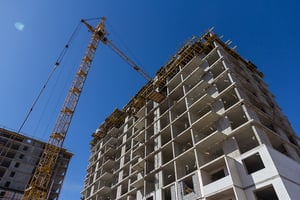What’s Happening Now in the NY Construction Market

What’s required, what’s banned and what’s changing now in New York construction? Here’s a look at the new laws, trends and issues impacting the NY construction market.
SCOTUS Blocks Vaccine Mandate
The U.S. Supreme Court has blocked the rule that would have required vaccine mandates or weekly testing at all businesses with 100 or more employees. CNN says that vaccine mandate decisions are now up to individual businesses – although businesses must still follow local laws and OSHA requirements. As of December 27, New York City has a vaccine requirement for certain workers. Vaccine mandates continue to be controversial. According to Construction Dive, 75% of unvaccinated workers say that vaccine mandates might prompt them to quit.
New Construction Faces Gas Ban
New York City has passed a law to ban gas use in new construction. According to Architectural Record, the new requirement will go into effect in 2024 for buildings that are shorter than seven stories, and it will take effect in 2027 for other buildings. At least 66 other jurisdictions, mostly in California, have passed similar laws in recent years in an effort to reduce greenhouse gas emissions. More bans may be coming. E&E News says that a state-wide ban is now being considered in New York.
Demolition Accidents Prove Fatal
According to Engineering New-Record, at least six fatal demolition-related accidents occurred in the first half of 2021. One of these involved Richmond Construction, a New York City-based construction company. According to Safety Reports, an investigation found that the contractor failed to provide and ensure the use of fall protection safeguards. OSHA has cited Richmond Construction for nine willful, repeat and serious violations, with proposed penalties totaling a $374,000.
OSHA’s Top 10 Most Frequently Cited Standards
OSHA has released its Top 10 Most Frequently Cited Standards for fiscal year 2021. According to Occupation Health & Safety, the top 10 standards are:
Fall Protection, general requirements (29 CFR 1926.501)
Respiratory Protection, general industry (29 CFR 1910.134)
Ladders, construction (29 CFR 1926.1053)
Scaffolding, general requirements, construction (29 CFR 1926.451)
Hazard Communication Standard, general requirements (29 CFR 1910.1200)
Control of Hazardous Energy (Lockout/Tagout), general requirements (29 CFR 1910.147)
Fall Protection – Training Requirements (29 CFR 1926.503)
Eye and Face Protection (29 CFR 1926.102)
Powered Industrial Trucks, general requirements (29 CFR 1910.178)
Machinery and Machine Guarding, general requirements (29 CFR 1910.212)
As expected, many standards that are relevant to the construction industry made the list, including fall protection, ladders and scaffolding. Construction is one of the worst industries for workplace injuries. The Bureau of Labor Statistics says that construction, extraction, transportation and material moving occupations made up nearly half of all workplace deaths in 2020.
Materials Prices Remain High
According to Construction Dive, an analysis from the Associated General Contractors of America (ACG) shows that the prices charged by goods producers and service providers increased 0.5% in December and 19.6% in 2021. Many materials, including plastic, lumber, plywood and steel mill products, have seen sharp price increases in recent months. Warning that these high prices could impede the construction industry’s recovery, the ACG wants the administration to reconsider the increased tariffs on softwood lumber.
The New York construction market keeps changing, but the need for strong risk management stays the same. BNC can help you control your risks with insurance designed for construction exposures. Learn more.



